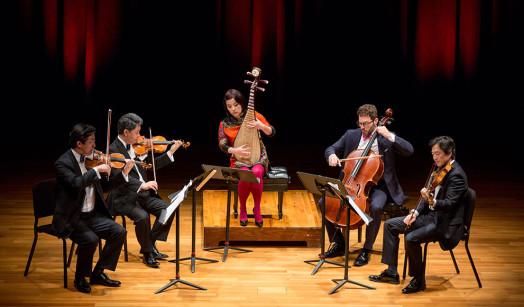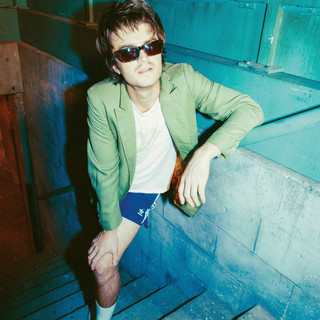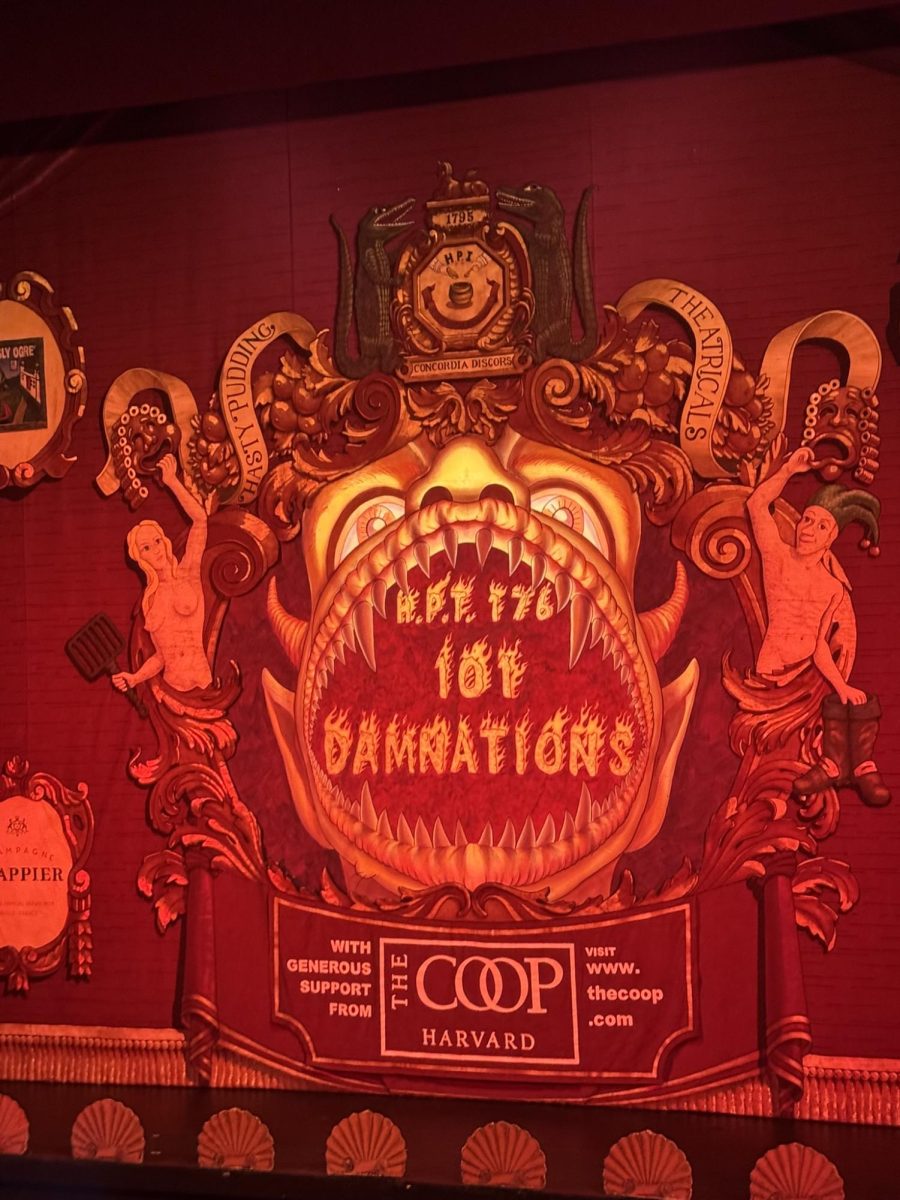When I mentioned to my mom that Wu Man was going to be performing at Wellesley, she turned into the human embodiment of ten exclamation points in a row. Let me explain: Wu Man is best known for being a Chinese pipa virtuoso, for introducing Chinese music and the pipa into Western culture and for being a huge deal—especially among people in her/my parents’ generation. Wu is a leading figure when it comes to bridging the cultural gap that exists between Eastern and Western cultures, and she does her part through her transforming performances on the pipa.
For those who aren’t aware, the pipa is a lute-like instrument popular in both ancient and modern China, and it is held upright and plucked with the body of the instrument sitting in the player’s lap. Unlike Western lutes, though, the pipa has a solid (rather than hollow) body. Despite having no resonance chamber, the pipa emanates a powerful yet soothing sound in the right hands.
In Wu’s hands on Sunday afternoon in the Alumnae Hall ballroom, it certainly felt like the pipa was finally home. The other half (or rather 4/5ths) of the performers consisted of the renowned Shanghai Quartet, and together, the five of them performed works written for string quartet and pipa by contemporary Chinese composers. The repertoire was anything but standard with works that introduced a new type of globalized Chinese music; the violin, viola and cello are traditionally western string instruments, and the pipa is an eastern string instrument. Collaboration between eastern and western styles of music is still relatively new, and hearing them together on Sunday was eye-opening to say the least.
The opening piece, “Selections from ‘China Song,’” was arranged by the quartet’s own second-violinist, Yi-Wen Jiang. Stylistically the pieces were based on folk melodies traditionally played by ancient Chinese instruments, but by playing a westernized arrangement for string quartet, the Shanghai Quartet skillfully demonstrated their fluency in both Eastern folk and Western classical styles.
The first two selections of the piece featured regional folk music from Guizhou (a mountainous province in southwest China known for its ancient rural villages) and Inner Mongolia, with the former creating the atmosphere for a celebratory village dance and the latter evoking images of a shepherd nostalgically herding sheep under a clouded blue sky.
The last selection was not based on any folk melody but rather had elements that imitate the boisterous sounds of traditional Chinese celebrations. Taken as a whole, this last selection was especially impressive—although there were just two violins, a viola and a cello playing, the bustling liveliness of the piece made it seem like a small orchestra was performing onstage.
For me though, the first big highlight of the concert was the multimedia performance of “Red Lantern,” which featured both Wu Man and the Shanghai Quartet. “Red Lantern,” composed by Zhao Lin, was inspired by his father’s composition for the critically acclaimed film “Raise the Red Lantern.” In addition to the music, a video that followed the winding path of a traditional Chinese private courtyard provided a visual that went along nicely with the tranquil nature of the piece, which was a five-part suite with movements titled Moonlight, Wandering, Love, Death and Epilogue.
Wu’s mystifying pipa playing rendered a lyricality that stood out from the rest of the strings, yet the pipa’s melodies fit in perfectly with the quartet’s part and the music remained as smooth as the sight of Wu’s fingers dancing across the pipa’s strings. Although the pipa is a plucked instrument, Wu’s masterful rapid-plucking techniques paired with skillful crescendos and decrescendos flowing in and out of the melodies created a single line of music that conjured up images of a secluded but free-flowing river in the middle of an untouched forest. Wu’s beautiful pipa music together with the resonating nature of the string quartet undoubtedly came together to create an exceptionally soothing composition. Some might even argue it was too soothing — I saw a number of audience members unmistakably nodding off during the quieter sequences of the piece.
The other main highlight of the concert was the finale, “Concerto for String Quartet and Pipa,” composed by Tan Dun, who is most widely known for composing the scores for “Crouching Tiger, Hidden Dragon” and “Hero.” Tan describes this piece as a “cross-cultural and cross-media dialogue that… employs elements from Chinese, Tibetan, English and American cultures and combines performance traditions of the European classical concert, Chinese shadow puppet theater, visual art installations, folk music, dramatic theater and shamanistic ritual.”
It may very well be that I am just uncultured, but while the work was undeniably multimedia, I am nearly positive there were no allusions to Chinese shadow puppet theater or shamanistic rituals, and there were definitely no visual art installations during this part of the concert. I genuinely enjoyed the finale, especially with all of the unconventional methods of music-making that the musicians employed; such methods included mid-bow shouts, coordinated sighs, coordinated stomping and the sound of wood on wood created by tapping the back of the bow against the body of the instrument. However, I do feel that Tan may have gone a bit too far with explaining his composition.
All things considered, Wu Man and the Shanghai Quartet gave a captivating performance that combined Eastern and Western cultures and sounds to form a new, more modern twist on traditional Chinese music that made for an enjoyable Sunday afternoon.





